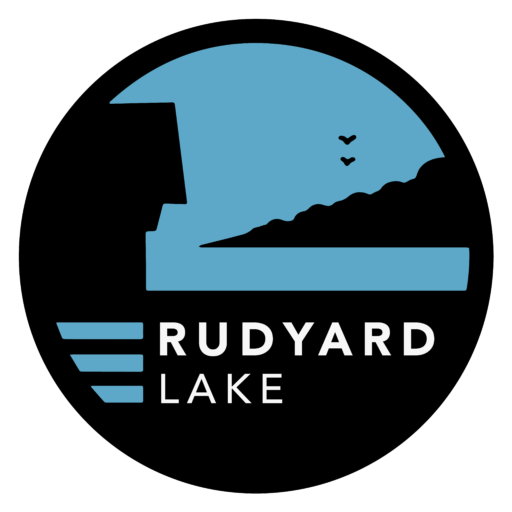
Cliffe Park Hall
History
Cliffe Park Hall, located on the northwest side of the lake was built by John Haworth in 1811 at a cost of £25,000.
John Haworth, the son of wealthy merchants, died in 1831 and left the Cliffe Park estate to his cousin (and lover) Fanny Bostock.
Fanny, was born in Horton in June 1796 (the year before the act of parliament was passed to construct the Dam). She lived most of her life at Cliffe Park Hall.
For 50 years after the Dam was built, Rudyard Lake was a peaceful place with only private landowners allowed access to the shoreline and lake itself.
1849 marked the opening of the North Staffordshire Railway “Churnet Valley Branch” and from 1851-1856, Fanny fought a five year long court action against the North Staffordshire Railway to try and prevent their popularisation of the lake and reduce the influx of visitors by rail that they encouraged.
She ultimately secured a permanent injunction which prevented the N.S.R from using the lake for commercial activities.
Fanny later died a spinster on 19th March, 1875 whereupon the Cliffe Park estate was split up.
“For 50 years after the Dam was built, Rudyard Lake was a peaceful place with only private landowners allowed access to the shoreline and lake itself…”

The Reverend Edward Boothman, the husband of Fanny Bostock’s niece, bought the hall and some its land and buildings for £14,250 with the remaining land being sold off in smaller plots.
These sales were largely responsible for the development of land around the lake as it is today.
Being so long ago, there are no photographs of John Haworth or Fanny Bostock, however we do have 1 painting of John Haworth, and 2 of Fanny Bostock, the first one thought to be c. 1835.
OPEN FOR BUSINESS
in 1903, the NSR acquired the Cliffe Park estate with the intention of constructing a golf course on the land between the hall and the lake. A year later they secured an act of parliament to allow commercial activities on the lake.
After overturning the Bostock act of 1856, the NSR were now empowered to rent out motor launches and rowing boats, and by 1905 a golf course had been laid out.
Their intent was to demolish the hall and build a new club house, however the money for this was not forthcoming and it was decided to use the hall itself as the clubhouse, with only changing rooms and locker rooms being added to the existing building.
A new railway station, ‘Rudyard Lake Station’ (later renamed to ‘Cliffe Park Halt’) was built at the north end of the lake to serve the course.
The golf course, enlarged from nine holes to eighteen in 1908, closed in 1926 which was probably due to the general post-war conditions and reduced train services, together with the availability of newer golf courses that were more easily accessible from the local towns.
Cliffe Park Hall was then let privately until 1933 when its then current owners, London Midland and Scottish Railway (NSR’s successors) leased it to the Youth Hostels Association, and it became known as Rudyard Lake Hostel.
Cliffe Park as a Youth Hostel.
The Hostel opened it’s doors on the 1st June, 1933. Rudyard Lake Hostel proved to be one of the YHA’s more popular venues.
After the second world war the hostel was in dire need of renovation. The new owners, British Rail, were unwilling to do that without significantly increasing the rent so the YHA began negotiations to take it over. They finally succeeded in September 1955 and promptly started work.
It wasn’t until 6th July 1958 that the hostel was re-opened with great fanfare by the Lord Mayor of Manchester, the re-opening coinciding with the hostel’s silver jubilee. It continued as a Youth Hostel until 1969 when it was sold to Brian Dalley who lived there until his death in 2015.
Shortly before his death Mr Dalley was the victim of an aggravated burglary at the hall, during which he was tied up for several hours and beaten.
Following Mr. Dalley’s death the hall has been sold again.

GEORGE ORWELL
Most noticeably, early on during its years as a youth hostel back in February 1936, a certain George Orwell stayed at Cliffe Park Hall.
He visited Rudyard whilst conducting his research for ‘The Road To Wigan Pier’, which sought to expose the working and living conditions of the economically deprived North of England during that time.
Please read our page on George Orwell for more information and extracts from his diary.
ARCHITECTURE
The hall is of stone construction and is to a Neo-Gothic design although Pevsner describes the hall (and others of a similar date) as “Gothic in intention rather than in the accuracy of features and their combination”.
The walls are topped with crenallations so the flat roof is not visible from the ground and the chimney stacks are disguised as turrets. The semi-circular bow in the centre of the west wall and the narrow upright windows give a castle-like effect to the whole building.
The style is continued in the lodge to the hall which is also a separately listed Grade II listed building.
[ Historic England. “Cliffe Park Hall (1037794)”. National Heritage List for England. ]






INSIDE CLIFFE PARK HALL
Some photos of inside Cliffe Park Hall, in its dilapidated state!









































